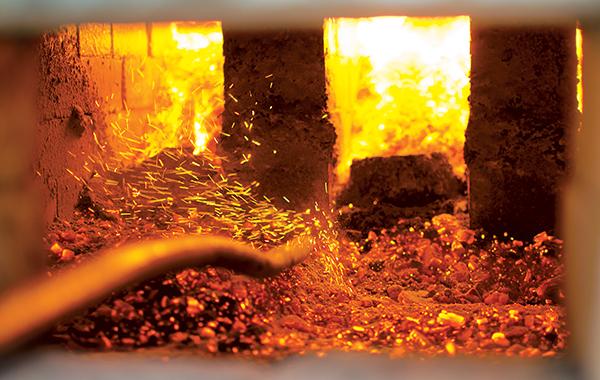Ceramic students participate in 24-hour wood-firing kiln
March 27, 2012
Sacramento State’s ceramics department fired up its student-made wood-firing kiln before spring break, challenging those who participated to collaborate to keep the flame lit throughout the week-long event.
For the past four years, ceramics professor Scott Parady has been holding a ceramics guild where students and volunteers come out to help with the kiln located in Kadema Hall.
The firing of the kiln gives students a chance to get experience with all of the preparations it takes to keep the kiln lit.
The kiln is an oven loaded with wood every few minutes for 24 hours so it can remain hot enough to cook the ceramics.
“This is really special because although you do a lot of preparation you get a lot of different results, and it is a great community builder,” volunteer Dania Lukey said.
The Pathfinder Grant awarded $10,000 to the ceramics department. Parady made a proposal highlighting the wood, which creates little smoke making this kiln green-friendly, making it available to use frequently with little pollution.
“With the amount of wood we burn, we make very little smoke and we burn as much in a few days as most houses burn in a whole winter,” Parady said.
Parady said the kiln was built with students from two of his advanced ceramics classes who laid the bricks and the department’s tech helped with the welding.
“I didn’t build this for myself, but for students so that they could participate and be inspired,” Parady said.
The wood used to keep the kiln lit was donated from different sources such as the Recreation, Parks and Tourism Administration. Parady said the department also tries to work with university landscapers as well for the donation of wood.
The kiln has been a part of the week-long event for the past four years and is lit once a semester. Parady said he usually makes this part of his classes but this year it is optional and he feels more students are getting interested in this type of art.
“This is a pretty heavy process to make the work and then the commitment,” senior art studio major Ashlee Deanda said.
Students and volunteers take turns with different shifts through the night – making sure there is enough wood to put into the fire.
The event was made possible through the volunteers helping with all of the work that goes with keeping the kiln lit.
“It isn’t just about the kiln but also to create a certain atmosphere,” Parady said.
Because students and volunteers were able to work on the project together, Parady said a different mentality was adopted by participants.
“Ceramics is different from a lot of the other things and maybe all of the other arts. We are working together to make all of our art in this place with this kiln in this space. Painters go off in another room and paint, so it is more individual where this is more working together” Parady said.
Elisha Angrisani can be reached at news@statehornet.com.
































































































































